As we drift off into slumber each night, our minds embark on a journey of dreams. These enigmatic experiences can be shaped by various factors, including the presence of sleep disorders. Understanding the effect of sleep disorders on dreaming is a fascinating exploration, as it sheds light on the intricate relationship between our sleep patterns and the contents of our dreams. In this article, we will delve into the different types of sleep disorders, such as insomnia, narcolepsy, sleep apnea, and restless leg syndrome, and investigate the impact they have on our dreams. Additionally, we will unravel the role of REM sleep in dreaming, explore the phenomenon of lucid dreaming in sleep disorder patients, and examine the common themes and symbols that emerge in their dreams. Finally, we will discuss the effect of sleep medications on dreaming, techniques to enhance dream quality, the frequency of nightmares in sleep disorder patients, and the importance of seeking treatment for these disorders. Get ready to unravel the mysteries of sleep and dreams as we delve into the captivating world of sleep disorders and their effect on dreaming.
Types of Sleep Disorders

Sleep disorders can have a profound impact on our overall well-being and, in turn, our dream experiences. There are several types of sleep disorders that individuals may encounter, each with its own unique characteristics. One of the most common sleep disorders is insomnia, which involves difficulty falling asleep or staying asleep throughout the night. Another sleep disorder is narcolepsy, a neurological condition characterized by excessive daytime sleepiness and sudden bouts of sleep. Sleep apnea is another prevalent sleep disorder, where individuals experience pauses in breathing during sleep, leading to frequent awakenings and disrupted sleep. Lastly, restless leg syndrome causes uncomfortable sensations in the legs, often accompanied by an irresistible urge to move them, making it challenging to achieve restful sleep. Each of these sleep disorders can significantly impact an individual’s ability to enter specific sleep stages, such as REM sleep, which play a crucial role in the dreaming process. By understanding the different sleep disorders, we can begin to unravel their influence on our dreaming experiences and gain insights into the fascinating connection between our sleep and dream worlds.
Insomnia
Insomnia is a sleep disorder that manifests as persistent difficulty falling asleep or staying asleep throughout the night. This condition can result in a range of physical and psychological consequences, including daytime sleepiness, fatigue, irritability, and impaired cognitive function. Insomnia can be further classified into different types based on its duration and underlying causes.
1. Acute Insomnia: This is a short-term form of insomnia that usually lasts for a few nights or weeks. It is often triggered by stressful life events, jet lag, or environmental factors. Individuals experiencing acute insomnia may find it challenging to initiate sleep and may wake up frequently during the night.
2. Chronic Insomnia: Unlike acute insomnia, chronic insomnia persists for a more extended period, typically lasting for at least three nights a week for three months or longer. It is often associated with underlying medical conditions, mental health disorders, or certain medications. Chronic insomnia can significantly impact an individual’s overall quality of life and may require medical intervention.
Insomnia not only disrupts the quantity and quality of sleep but also has implications for dreaming experiences. Sleep deprivation resulting from insomnia can alter the sleep architecture and disrupt the normal progression of sleep stages, including REM sleep, which is closely linked to dreaming. As a result, individuals with insomnia frequently report fragmented and less vivid dreams. The content of their dreams may also be influenced by the psychological and emotional challenges associated with insomnia, such as stress, anxiety, or depression.
Understanding the impact of insomnia on dreaming can provide valuable insights into the intricate relationship between sleep disorders and the dream world. By exploring these connections, researchers and individuals alike can gain a deeper understanding of the complexities of insomnia and its effects on our sleep and dream experiences. To learn more about interpreting nightmares and finding solutions, you can refer to our previous article here.
Narcolepsy
Narcolepsy is a neurological disorder characterized by excessive daytime sleepiness and sudden, uncontrollable episodes of falling asleep during the day. This condition can have a significant impact on an individual’s ability to achieve restful sleep at night. One of the distinct features of narcolepsy is the occurrence of cataplexy, which is a sudden loss of muscle tone triggered by strong emotions. This can lead to temporary muscle weakness or complete collapse, making it challenging for individuals with narcolepsy to engage in daily activities without fear of unexpected episodes. Additionally, narcolepsy can disrupt the normal sleep-wake cycle, causing fragmented sleep patterns and frequent awakenings throughout the night. Due to the disruptions in sleep architecture, narcolepsy can influence the dreaming process. People with narcolepsy often experience vivid and intense dreams, which can be difficult to distinguish from reality. These dreams can range from ordinary scenarios to more bizarre or surreal experiences. It is not uncommon for individuals with narcolepsy to have dreams that incorporate elements from their waking life, blurring the line between dreams and real-life events.1 Understanding the dynamics of dreaming in narcolepsy is essential for researchers and healthcare professionals in managing the symptoms and improving the quality of life for individuals living with this disorder.
References:
1 Dreams and Real-Life Events
Sleep Apnea
Sleep apnea is a common sleep disorder that can have a significant impact on both sleep quality and dreaming experiences. It is characterized by repeated pauses in breathing during sleep, often due to a narrowing or collapse of the airway. These pauses, known as apneas, can last for several seconds or even minutes, leading to interrupted sleep and decreased oxygen levels in the body. As a result, individuals with sleep apnea may experience excessive daytime sleepiness, fatigue, and difficulty concentrating.
The effect of sleep apnea on dreaming is complex and multifaceted. One of the key ways sleep apnea can influence dreams is through its impact on sleep architecture. Sleep apnea disrupts the normal progression of sleep stages, particularly REM sleep, which is the stage associated with vivid dreaming. During apneas, the brain is briefly aroused to initiate breathing again, causing frequent awakenings throughout the night. These interruptions can disrupt the natural cycling between REM and non-REM sleep, leading to fragmented and less restorative sleep. As a result, individuals with sleep apnea may experience a decrease in the frequency and duration of REM sleep, which can affect their ability to recall dreams and may contribute to a general reduction in dream vividness.
In addition to altering sleep architecture, sleep apnea can also influence the content and themes of dreams. The physiological and psychological stress caused by sleep apnea can manifest in dreams as anxiety, fear, and feelings of suffocation or being trapped. Many individuals with sleep apnea report having nightmares or vivid dreams that revolve around these themes. The disrupted breathing patterns during sleep can also trigger sensations that carry over into dreams, such as a feeling of suffocation or a struggle to catch one’s breath. These dream experiences can contribute to a sense of unrest and unease during sleep, further impacting the quality of sleep for individuals with sleep apnea.
Treating sleep apnea is crucial not only for improving overall sleep quality but also for mitigating its impact on dreaming. Continuous positive airway pressure (CPAP) therapy is a common treatment for sleep apnea. It involves wearing a mask that delivers pressurized air to keep the airway open during sleep, preventing apneas and improving oxygen flow. By effectively managing sleep apnea, individuals can restore normal sleep architecture, enhance the quality of their sleep, and potentially improve their dreaming experiences.
Sleep apnea is a sleep disorder that can significantly impact both the structure and content of dreams. Through its disruption of sleep architecture and the physiological and psychological stress it induces, sleep apnea can lead to fragmented sleep, reduce the frequency and vividness of dreams, and contribute to the presence of anxiety-inducing dream themes. Seeking treatment for sleep apnea, such as CPAP therapy, can not only improve sleep quality but also enhance dream experiences. Understanding the connection between sleep apnea and dreaming highlights the importance of addressing sleep disorders for optimal overall well-being and a more fulfilling dream life.
Restless Leg Syndrome
is a sleep disorder that can greatly impact a person’s ability to get a good night’s sleep. Individuals with this condition experience unpleasant sensations in their legs or an irresistible urge to move them, particularly when they are trying to relax or sleep. This can lead to significant sleep disruptions and difficulty falling asleep or staying asleep throughout the night. The symptoms of Restless Leg Syndrome often intensify during periods of rest, making it a particularly challenging disorder to manage when it comes to sleep. The exact cause of Restless Leg Syndrome is not fully understood, although it is believed to be related to abnormalities in the dopamine signaling system in the brain. This condition not only affects the quality of sleep but can also influence dream patterns. Studies have shown that individuals with Restless Leg Syndrome may experience more frequent and vivid dreams, possibly due to the restless movement and sensory disturbances in their legs. Understanding the impact of Restless Leg Syndrome on dreaming is an essential aspect of studying the intricate relationship between sleep disorders and our dream experiences. By identifying the connection between these two areas, researchers can develop better treatment approaches to alleviate the symptoms of Restless Leg Syndrome and improve the quality of sleep and dreams for those affected by this condition.
Linking Sleep Disorders to Dreaming
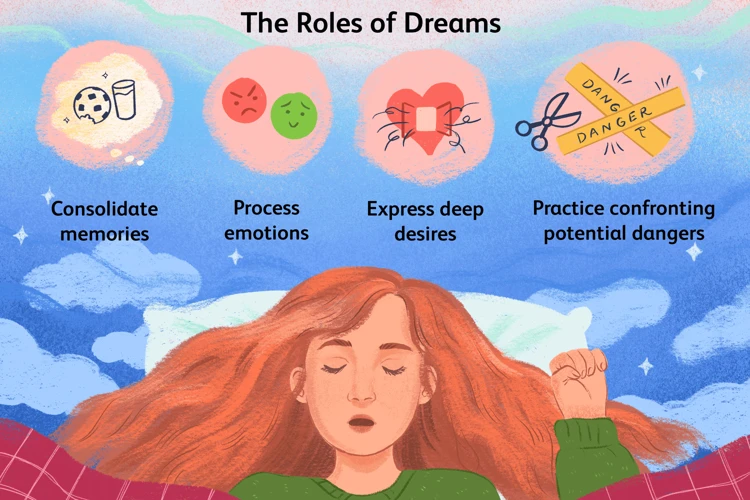
The relationship between sleep disorders and dreaming is a complex and intriguing one. Various sleep disorders can have an impact on the frequency, intensity, and content of our dreams. For instance, individuals with insomnia often experience fragmented sleep, leading to shorter REM sleep durations and potentially affecting dream recall. On the other hand, individuals with narcolepsy may enter REM sleep more quickly, leading to vivid and intense dream experiences. Those with sleep apnea may experience interrupted breathing patterns during sleep, disrupting the normal sleep cycle and potentially affecting dreams. Additionally, individuals with restless leg syndrome may struggle with discomfort and involuntary leg movements, which can interfere with the dream state. Understanding the links between sleep disorders and dreaming is a crucial step in unraveling the mysteries of our dreamscapes and how they are influenced by our sleep patterns. By exploring these connections, we can gain valuable insights into the interplay between sleep disorders and dreaming, potentially improving our understanding and treatment of both.
Effects of Insomnia on Dreaming
Insomnia, a sleep disorder characterized by difficulty falling asleep or staying asleep, can have significant effects on dreaming. The disrupted sleep patterns and reduced overall sleep duration often experienced by individuals with insomnia can influence the content and intensity of their dreams. One of the main consequences of insomnia on dreaming is the decrease in REM sleep. REM sleep, also known as rapid eye movement sleep, is the sleep stage where most vivid dreams occur. It is during REM sleep that our brains are most active, and our dreams become more immersive and vivid. However, individuals with insomnia tend to have shorter periods of REM sleep or experience an imbalance in the sleep stages, leading to fragmented and less intense dream experiences. The lack of quality sleep caused by insomnia can also result in dream fragmentation, where dreams feel disjointed and lack a coherent narrative. Insomnia can contribute to an increase in negative dream experiences, such as nightmares or anxiety-provoking dreams, as sleep deprivation and heightened stress levels are known to influence dream content negatively. Understanding the effects of insomnia on dreaming can provide valuable insights into the intricate relationship between sleep disorders and the subconscious mind. Individuals struggling with insomnia can explore techniques such as creating a dream journal to unlock the meanings behind their dreams and identify any patterns or triggers that may contribute to their sleep disturbances.
Narcolepsy’s Influence on Dream Patterns
Narcolepsy, a neurological sleep disorder, not only affects an individual’s daytime functioning but also has a notable impact on dream patterns. This disorder is characterized by excessive daytime sleepiness, sudden loss of muscle control (cataplexy), sleep paralysis, and vivid hallucinations. These symptoms can all influence the content and intensity of dreams experienced by individuals with narcolepsy.
One key aspect of narcolepsy’s influence on dream patterns is the intrusion of dream elements into wakefulness. It is common for individuals with narcolepsy to experience vivid hallucinations during sleep onset or upon awakening. These hallucinations can be incredibly realistic and may incorporate a range of sensory perceptions, including visual, auditory, and tactile sensations. Such hallucinations can manifest as seeing people or objects that are not present or feeling as though the dream is blending into reality. These dream-like experiences can be perplexing and disorienting, further blurring the line between wakefulness and dream states.
Another significant aspect of narcolepsy’s influence on dream patterns is the occurrence of sleep paralysis. Sleep paralysis is a temporary inability to move or speak that happens during the transition between sleep and wakefulness. During sleep paralysis episodes, individuals may feel an intense sense of fear or dread and may also experience hallucinations. These hallucinations are often vivid and may involve sinister or supernatural elements. The combination of sleep paralysis and hallucinations can create deeply unsettling and intense dream experiences for individuals with narcolepsy.
The disrupted sleep architecture associated with narcolepsy can impact the overall structure and content of dreams. Rapid eye movement (REM) sleep, which is the stage of sleep where most dreaming occurs, can occur more frequently and rapidly in individuals with narcolepsy. As a result, individuals with narcolepsy may experience more dreams throughout the night and enter REM sleep more quickly after falling asleep. This increase in REM sleep may contribute to more frequent, vivid, and emotionally charged dreams.
Narcolepsy’s influence on dream patterns is a multifaceted phenomenon that involves elements like hallucinations, sleep paralysis, and alterations in REM sleep. These unique aspects shape the dreamscape of individuals with narcolepsy, making their dream experiences distinct from those without the disorder. By understanding the impact of narcolepsy on dream patterns, researchers and clinicians can gain valuable insights into the relationship between sleep, dreams, and the underlying neurological mechanisms involved in narcolepsy.
Understanding Dreaming in Sleep Apnea Patients
Sleep apnea, a common sleep disorder characterized by pauses in breathing during sleep, can have a significant impact on the quality and content of dreams experienced by affected individuals. Understanding dreaming in sleep apnea patients requires delving into the disturbances caused by the disorder. The interruptions in breathing and subsequent awakenings experienced by sleep apnea patients can disrupt the natural sleep cycle, particularly the rapid eye movement (REM) sleep stage, which is closely associated with vivid dreaming. As a result, sleep apnea patients may experience alterations in the duration, intensity, and frequency of their dreams. Dreams in sleep apnea patients have been reported to be more fragmented, less coherent, and less emotionally intense compared to those of individuals without the disorder. These alterations may stem from sleep fragmentation and the resulting reduced REM sleep duration and continuity, which can limit the amount of time available for vivid and immersive dreaming experiences. The physiological stress caused by the repeated awakenings and oxygen deprivation in sleep apnea can contribute to dreams that contain feelings of suffocation, being chased or attacked, or other distressing themes. Understanding the specific effects of sleep apnea on dreaming is crucial not only for enriching our knowledge of sleep disorders, but also for providing insights into the intricate relationship between sleep quality, brain function, and the formation of dreams.
Exploring Dreaming in Restless Leg Syndrome
Restless Leg Syndrome (RLS) is a sleep disorder characterized by uncomfortable sensations in the legs, often accompanied by an irresistible urge to move them. These sensations can range from tingling or crawling to aching or throbbing, causing significant discomfort for individuals with RLS. While RLS primarily affects the waking hours, it can also have an impact on dreaming during sleep.
When exploring dreaming in individuals with Restless Leg Syndrome, researchers have observed some interesting patterns. Many RLS patients report more frequent awakenings during the night, disrupting their sleep architecture. These awakenings can lead to fragmented sleep, affecting their ability to enter and maintain deep sleep stages, including REM sleep, where dreaming occurs.
In terms of dreaming experiences, individuals with RLS have reported a higher occurrence of unpleasant dreams. These dreams often involve feelings of restlessness or discomfort, mirroring the sensations experienced in their waking hours. The discomfort in their legs may manifest in their dreams as sensations of restlessness, or they may even find themselves moving their legs within their dreams.
Additionally, RLS can cause excessive movement during sleep, known as periodic limb movements (PLMs). These involuntary leg movements can be disruptive, with the potential to wake individuals during the night. As a result, dream recall may be influenced, as awakenings from these movements may interrupt the dreaming process.
It is worth noting that while RLS can impact dreaming experiences, not everyone with RLS will necessarily experience significant changes in their dreams. The extent to which RLS affects dreaming can vary among individuals, as each person’s experience with the disorder is unique.
Understanding the impact of Restless Leg Syndrome on dreaming can provide valuable insights into the relationship between sensory experiences during waking hours and dream content. Further research is needed to explore this connection in more detail and to gain a deeper understanding of how RLS influences the intricate realm of dreams. By shedding light on the relationship between RLS and dreaming, researchers aim to improve overall sleep quality and enhance the well-being of individuals living with this sleep disorder.
The Role of REM Sleep in Dreaming
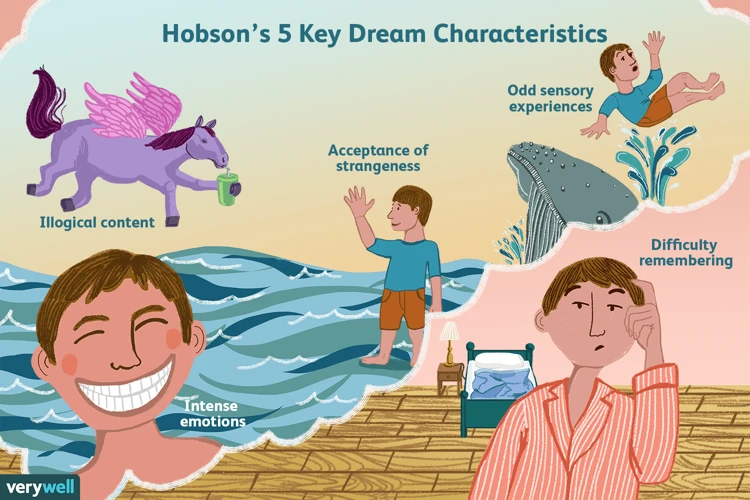
Dreaming is an intricate phenomenon that is closely linked to the rapid eye movement (REM) stage of sleep. REM sleep is characterized by fast and irregular eye movements, increased brain activity, and muscle paralysis. It is during this stage that most vivid and memorable dreams occur. Researchers have long been intrigued by the role of REM sleep in dreaming and have made significant strides in unravelling its mysteries.
One prevailing theory suggests that REM sleep and dreaming go hand-in-hand due to the activation of certain brain regions during this stage. The amygdala and the hippocampus are two particularly active areas during REM sleep. The amygdala, which is involved in processing emotions, and the hippocampus, which plays a crucial role in memory formation, work in tandem to create vivid and emotionally charged dream experiences.
Studies have shown that the prefrontal cortex, responsible for higher-order cognitive functions such as decision-making and self-awareness, is relatively inactive during REM sleep. This reduced activity in the prefrontal cortex may explain the often illogical and fragmented nature of dreams.
While REM sleep is strongly associated with dreaming, it is important to note that not all dreams occur during this stage. Dreams can also take place during non-REM (NREM) sleep, although they tend to be less vivid and memorable in comparison.
The exact function of dreaming and the role of REM sleep in this process are still subjects of ongoing research and debate. Some theories suggest that dreaming serves a cognitive function, allowing the brain to process and consolidate memories, while others propose that it plays a role in emotional regulation and problem-solving.
Understanding the role of REM sleep in dreaming provides valuable insights into the nature of dreams and their connection to our sleep cycles. By studying this fascinating phenomenon, researchers are getting closer to unraveling the intricate relationship between our dreams, sleep stages, and overall brain functioning.
Unveiling Lucid Dreaming in Sleep Disorders
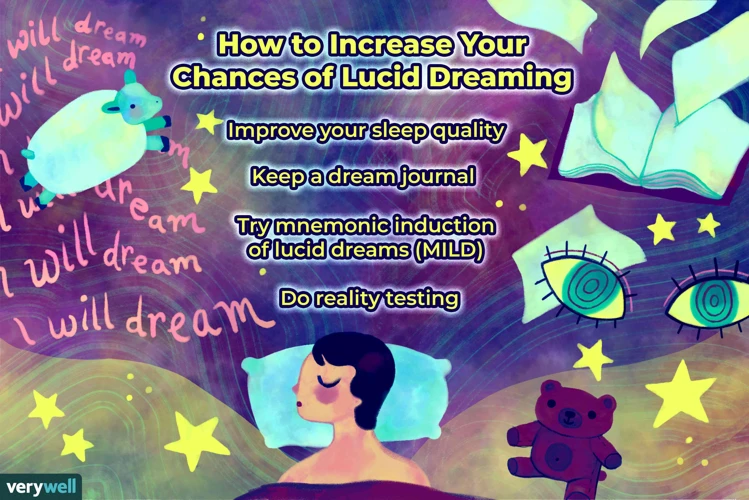
Lucid dreaming, the state of being aware that one is dreaming while still in the dream, is a fascinating phenomenon that has piqued the interest of researchers and dream enthusiasts alike. While lucid dreaming is often associated with creativity, self-awareness, and control over dream narratives, its occurrence in individuals with sleep disorders adds an intriguing layer of complexity. Individuals with sleep disorders, such as insomnia, narcolepsy, sleep apnea, or restless leg syndrome, may experience distinct patterns of lucid dreaming. For example, individuals with insomnia may find it easier to achieve lucidity due to their heightened state of consciousness and difficulty transitioning into deep sleep. On the other hand, individuals with narcolepsy may paradoxically experience less lucid dreaming due to the sudden and uncontrollable nature of their sleep attacks. Sleep apnea, characterized by disrupted sleep and frequent awakenings, may also impact the occurrence of lucid dreaming, as individuals may find it challenging to maintain dream awareness amidst interruptions in their sleep. Restless leg syndrome, with its uncomfortable leg sensations, can disrupt the ability to enter the deep sleep stages necessary for lucid dreaming. Understanding the connection between sleep disorders and lucid dreaming can provide valuable insights into both the cognitive aspects of dreaming and the underlying mechanisms of sleep disorders themselves. Exploring the interplay between these two intriguing phenomena opens up new avenues for research and may contribute to the development of tailored approaches to enhance and manage lucid dreaming experiences in individuals with sleep disorders.
Common Themes and Symbols in Dreams of Sleep Disorder Patients

When exploring the dreams of sleep disorder patients, it is intriguing to observe the common themes and symbols that emerge. These dreams often reflect the underlying experiences and challenges faced by individuals with sleep disorders. Here are some notable common themes and symbols in the dreams of sleep disorder patients:
1. Running or being chased: Many individuals with sleep disorders experience dreams of being chased or feeling the need to run. This can be interpreted as a manifestation of the constant struggle to find restful sleep and escape the effects of their disorder.
2. Unfinished tasks: Dreams about unfinished tasks or being unable to complete a particular activity are recurrent themes for sleep disorder patients. These dreams may reflect a sense of frustration or the constant feeling of not being able to accomplish everything due to sleep disruptions.
3. Confusion and disorientation: Sleep disorder patients often report dreams that involve confusion, disorientation, and a lack of control. These dreams may mirror the real-life experiences of feeling groggy, disoriented, or in a fog-like state due to sleep deprivation or the effects of medications.
4. Failing or being unprepared: Dreams of failing an exam, being unprepared for an important event, or making critical errors are prevalent among sleep disorder patients. These dreams may embody the fear of not being able to fulfill obligations or the anxiety surrounding the potential consequences of inadequate sleep.
5. Water or drowning: Dreams involving water or drowning are commonly reported by sleep disorder patients. These dreams may symbolize the feeling of being overwhelmed by the challenges of their condition or the suffocating sensation associated with sleep disturbances.
6. Escaping or flying: Dreams of flying or finding an escape route are frequent among sleep disorder patients. These dreams may signify the desire for freedom from the constraints of their condition or the yearning for a sense of relief and tranquility.
It is important to note that the interpretation of dreams is subjective and can vary from person to person. These common themes and symbols provide a glimpse into the potential psychological and emotional aspects experienced by individuals with sleep disorders. Exploring these dreams can deepen our understanding of the impact of sleep disorders on a person’s subconscious mind and further emphasize the importance of addressing and managing these conditions effectively.
Effect of Sleep Medications on Dreaming

The Effect of Sleep Medications on Dreaming:
When it comes to managing sleep disorders, medications are often prescribed to help individuals achieve a good night’s rest. However, it’s important to consider the potential impact of these medications on dreaming. Here are a few key points to understand:
1. Types of Sleep Medications: There are different types of sleep medications available, including sedatives, hypnotics, and anti-anxiety medications. These drugs work by altering brain activity and promoting drowsiness, aiding individuals in falling asleep and staying asleep.
2. Changes in Dream Patterns: Sleep medications can have varying effects on dreaming. While some individuals may report no significant changes, others may experience alterations in dream intensity, frequency, or vividness. Some people may even report a lack of dreams altogether.
3. REM Sleep Suppression: Rapid Eye Movement (REM) sleep is the stage of sleep where dreaming occurs most frequently. Certain sleep medications can suppress REM sleep, resulting in fewer or less vivid dreams. This can be beneficial for those experiencing distressing or disruptive nightmares.
4. Dream Recollection: Sleep medications can also affect dream recollection. Due to sedation or changes in sleep architecture, individuals may have difficulty remembering their dreams upon waking. This can make it challenging to analyze and interpret dreams.
5. Unintended Side Effects: It’s worth noting that while sleep medications can aid in achieving better sleep, they may also cause side effects that can indirectly affect dreaming. These side effects can range from drowsiness and dizziness to changes in mood or cognition.
6. Individual Variations: The impact of sleep medications on dreaming can vary from person to person. Factors such as the type and dosage of medication, overall health, and individual brain chemistry can contribute to these variations.
It’s essential to consult with a healthcare professional about the potential effects of sleep medications on dreaming. They can provide guidance on choosing the right medication, monitoring any changes in dream patterns, and adjusting the dosage if necessary. Additionally, incorporating non-pharmacological approaches to manage sleep disorders, such as improving sleep hygiene or implementing relaxation techniques, may be beneficial to enhance dream quality and overall sleep experience.
Techniques to Enhance Dream Quality in Sleep Disorder Patients

Exploring techniques to enhance dream quality can be particularly beneficial for individuals with sleep disorders. Incorporating these techniques into their routine can potentially improve their overall sleep quality and promote more vivid and meaningful dreams. One effective method is keeping a dream journal. By recording dreams immediately upon waking, individuals can strengthen their dream recall abilities over time. This can lead to increased awareness of dream patterns, symbols, and themes, ultimately enhancing the overall dream experience. Another technique is practicing reality checks. Sleep disorder patients can train themselves to regularly question their reality throughout the day, which can carry over into their dreams. By consistently performing reality checks, such as looking at a clock or reading text, individuals may become more attuned to identifying when they are dreaming. This can lead to the phenomenon known as lucid dreaming, where the dreamer becomes aware that they are in a dream state and can actively participate in and manipulate the dream. Implementing relaxation techniques, such as meditation or yoga, before bedtime can also promote better sleep and potentially enhance dream quality. These practices can help reduce stress and promote a more relaxed state of mind, providing a fertile ground for more positive and vivid dream experiences. Additionally, avoiding stimulants, such as caffeine and nicotine, close to bedtime can contribute to a more peaceful sleep and promote more restorative dreams. Experimenting with different techniques and finding what works best for each individual can lead to a more fulfilling dream life, providing a welcome respite from the challenges posed by sleep disorders.
The Impact of Sleep Disorders on Nightmare Frequency
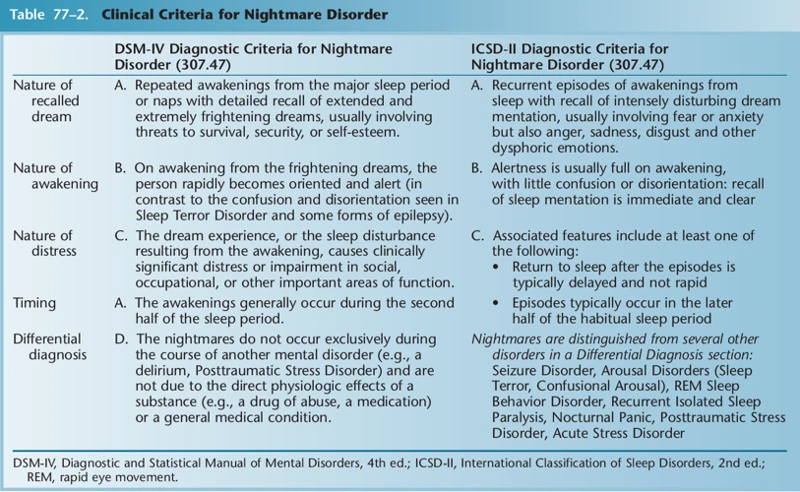
The Impact of Sleep Disorders on Nightmare Frequency
Sleep disorders can have a significant impact on the frequency of nightmares experienced by individuals. Nightmares are vivid, disturbing dreams that often result in feelings of fear, anxiety, or terror upon awakening. When sleep is disrupted or when individuals struggle to achieve deep, restful sleep due to sleep disorders, the likelihood of experiencing nightmares increases.
One sleep disorder that has been closely linked to an increased frequency of nightmares is post-traumatic stress disorder (PTSD). Individuals with PTSD may experience recurrent nightmares related to traumatic events, which can contribute to sleep disturbances and further disrupt their overall sleep quality.
Another sleep disorder that can affect nightmare frequency is sleep apnea. Sleep apnea is characterized by pauses in breathing during sleep, often accompanied by loud snoring and frequent awakenings. These interruptions in sleep can lead to increased dream recall and a higher occurrence of vivid nightmares.
Additionally, restless leg syndrome (RLS) can also impact nightmare frequency. RLS causes uncomfortable sensations in the legs, leading to an irresistible urge to move them, particularly at night. This disturbance in sleep can result in fragmented sleep and an increased likelihood of experiencing nightmares.
Insomnia, with its difficulties in falling asleep or staying asleep, can contribute to stress and anxiety. These emotional factors can elevate the occurrence of nightmares in individuals with insomnia.
It is important to note that not all sleep disorders may directly cause nightmares, but they can create an environment conducive to disturbed dreaming. The factors that contribute to disrupted sleep, such as frequent awakenings, fragmented sleep, and emotional distress, can increase the chances of experiencing nightmares.
To address the impact of sleep disorders on nightmare frequency, it is crucial for individuals to seek proper diagnosis and treatment for their specific sleep condition. By effectively managing sleep disorders, individuals can improve their overall sleep quality and potentially reduce the occurrence of nightmares. Treatment options may include lifestyle changes, therapy, medication, or a combination of these approaches, depending on the sleep disorder and its underlying causes.
Sleep disorders can have a notable impact on nightmare frequency. The disruptions and disturbances caused by sleep disorders can create conditions that make it more likely for individuals to experience vivid and unsettling nightmares. Seeking appropriate treatment for sleep disorders not only improves overall sleep quality but may also help alleviate the frequency of nightmares and promote more restful and peaceful dreaming experiences.
Interpreting Dreams in the Context of Sleep Disorders
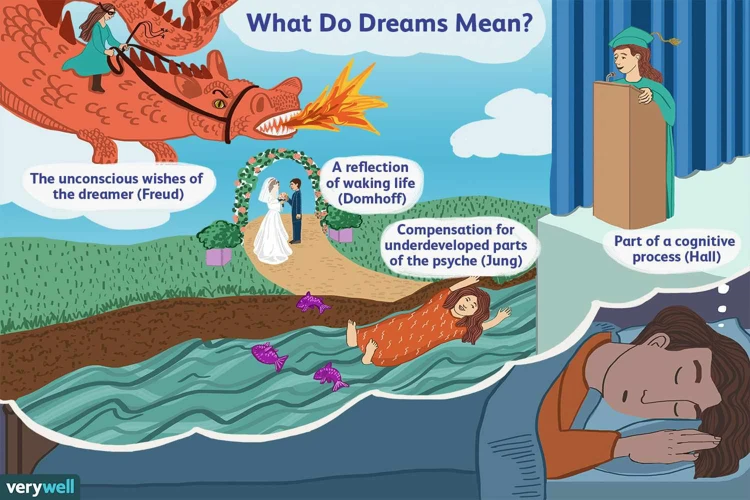
Interpreting dreams can be a fascinating and insightful endeavor, and when done in the context of sleep disorders, it becomes even more intriguing. Dreams experienced by individuals with sleep disorders can provide valuable clues about the underlying issues they may be facing. Here are some key points to consider when interpreting dreams in the context of sleep disorders:
1. Dream Disruptions: Sleep disorders often disrupt sleep patterns, leading to fragmented and interrupted sleep. This can have a direct impact on dream content, causing dreams to be disjointed and fragmented as well. Understanding these disruptions can help identify the specific sleep disorder at play.
2. Symbolic Representations: Dreams have a tendency to symbolically represent our emotions, subconscious desires, and unresolved issues. When interpreting dreams in the context of sleep disorders, it is important to be mindful of the unique symbols that may arise. For example, dreaming about suffocating or feeling trapped could indicate sleep apnea, while dreams of falling or losing control may be linked to experiences of narcolepsy.
3. Sleep Environment Influences: The sleep environment plays a crucial role in the quality of sleep and, consequently, dream experiences. Individuals with sleep disorders may have specific sleep habits or preferences that are reflected in their dreams. For instance, someone with insomnia may dream of being unable to find a comfortable bed or continually waking up throughout the night.
4. Emotional Significance: Emotions experienced during dreams can offer valuable insights into the psychological impact of sleep disorders. Dreams may reflect feelings of frustration, anxiety, or even relief associated with the challenges posed by certain sleep disorders. Exploring the emotional landscape of dreams can help individuals better understand and address the emotional toll of their sleep disorder.
5. Journaling and Tracking: Keeping a dream journal and tracking dream patterns can be incredibly useful when interpreting dreams in the context of sleep disorders. By documenting dreams over time, individuals can identify recurring themes, symbols, or patterns that may offer deeper insight into their sleep disorder and its potential impact on their dreaming experiences.
By paying close attention to these aspects and analyzing dreams within the context of sleep disorders, individuals can gain a deeper understanding of the connections between their sleep, dreams, and overall well-being. Remember, dream interpretation is highly personal, and seeking professional guidance from sleep specialists or therapists who specialize in dream analysis can provide valuable insights into the unique experiences of individuals with sleep disorders.
The Importance of Seeking Treatment for Sleep Disorders
Seeking treatment for sleep disorders is of utmost importance to improve overall well-being and quality of life. Ignoring or neglecting sleep disorders can have serious consequences on both physical and mental health. Here are several reasons why it is crucial to prioritize treatment for sleep disorders:
1. Restoration of Sleep Patterns: Sleep disorders can disrupt the natural sleep patterns that our bodies crave for rejuvenation. Seeking treatment helps restore these patterns, allowing for more consistent, restful sleep.
2. Reduced Daytime Impairment: Sleep disorders often lead to excessive daytime sleepiness, fatigue, and difficulty concentrating. By addressing these disorders, individuals can experience increased alertness, improved productivity, and enhanced cognitive functioning during waking hours.
3. Enhanced Mental Health: Sleep disorders have been linked to various mental health issues, including depression and anxiety. Treating these disorders can significantly alleviate symptoms and promote better emotional well-being.
4. Prevention of Serious Health Conditions: Many sleep disorders, such as sleep apnea, have been associated with an increased risk of developing other serious health conditions, including heart disease, diabetes, and high blood pressure. Seeking treatment for sleep disorders can help reduce these risks and promote overall cardiovascular health.
5. Improved Quality of Relationships: Sleep disorders can negatively impact personal relationships due to irritability, mood swings, and decreased intimacy. By seeking treatment and improving sleep quality, individuals can enhance their relationships and overall quality of life.
6. Enhanced Safety: Sleep disorders, such as narcolepsy, can lead to sudden episodes of sleep during daily activities, which can be dangerous, particularly while driving or operating machinery. Seeking treatment helps minimize these risks and improves overall safety.
7. Prevention of Accidents: Disrupted sleep patterns from sleep disorders can increase the likelihood of accidents and injuries in various contexts, including the workplace and home. Treatment can help reduce these risks and promote overall safety.
Remember, every sleep disorder is unique, and proper diagnosis and treatment should be sought from medical professionals specializing in sleep medicine. With the right treatment, individuals can regain control over their sleep and dreams, ultimately improving their quality of life in myriad ways. So don’t hesitate to seek help and take that necessary step towards better sleep and overall well-being.
Conclusion
In conclusion, investigating the effect of sleep disorders on dreaming offers valuable insights into the complex relationship between our sleep patterns and the content of our dreams. The various types of sleep disorders, including insomnia, narcolepsy, sleep apnea, and restless leg syndrome, can significantly impact the quality and frequency of our dreams. Understanding the role of REM sleep in dreaming and uncovering the phenomenon of lucid dreaming in sleep disorder patients further deepens our understanding of how sleep disorders can influence the dream experience. Additionally, exploring the common themes and symbols that emerge in the dreams of individuals with sleep disorders provides intriguing glimpses into the subconscious mind. It is also important to consider the effect of sleep medications on dreaming, as certain medications can alter the dream landscape. Techniques to enhance dream quality and the management of nightmares in sleep disorder patients offer potential avenues for improving their overall sleep experience. Finally, seeking treatment for sleep disorders is crucial not only for improving sleep quality but also for restoring a healthy dreaming process. By addressing underlying sleep disorders, individuals can achieve more restful sleep and potentially alleviate related dream disturbances. As we continue to unravel the mysteries of sleep and dreams, further research and exploration of this fascinating topic will undoubtedly contribute to our understanding of the profound and intricate relationship between sleep disorders and dreaming.
Frequently Asked Questions
What is the relationship between sleep disorders and dreaming?
Sleep disorders can have a significant impact on the content, intensity, and frequency of our dreams. They can disrupt the normal sleep cycle, affecting the amount of time spent in REM sleep, which is closely associated with vivid dreaming.
Can insomnia affect dreaming?
Yes, insomnia can influence dreaming. Insomniacs often experience difficulty falling asleep or waking up frequently during the night, which can result in fragmented sleep and fewer opportunities for vivid dreaming.
Do all sleep disorders impact dreaming in the same way?
No, different sleep disorders can affect dreaming in varying ways. For instance, narcolepsy may lead to vivid and hallucinatory dreams due to the disruption of rapid eye movement (REM) sleep.
What role does REM sleep play in dreaming?
REM sleep is a stage of sleep marked by rapid eye movements, heightened brain activity, and vivid dreams. It is believed to be the stage during which the majority of dreaming occurs.
Is lucid dreaming more common in individuals with sleep disorders?
There is a potential correlation between sleep disorders and increased frequency of lucid dreaming. Sleep disorders can occasionally trigger lucidity or conscious awareness during dreams.
How can sleep medications impact dreaming?
Sleep medications can influence dreams in different ways. While some medications may decrease dream recall or affect dream vividness, others may cause vivid and bizarre dreams as a side effect.
Are there techniques to enhance dream quality in individuals with sleep disorders?
Yes, there are various techniques that can help improve dream quality for individuals with sleep disorders. Keeping a dream journal, practicing relaxation techniques before bedtime, and maintaining a consistent sleep schedule are a few examples.
Can sleep disorders increase the frequency of nightmares?
Yes, sleep disorders can potentially increase the frequency of nightmares. Disrupted sleep patterns and increased stress levels associated with sleep disorders may contribute to more frequent and intense nightmares.
How can dream interpretation be affected by sleep disorders?
Sleep disorders can make dream interpretation more complex. Disturbed sleep patterns and fragmented dreams may make it challenging to capture the full context and meaning behind dream symbols and themes.
Why is it important to seek treatment for sleep disorders?
Seeking treatment for sleep disorders is crucial for several reasons. It can improve overall sleep quality, reduce the impact on dream experiences, enhance daytime functioning, and alleviate potential health risks associated with untreated sleep disorders.








